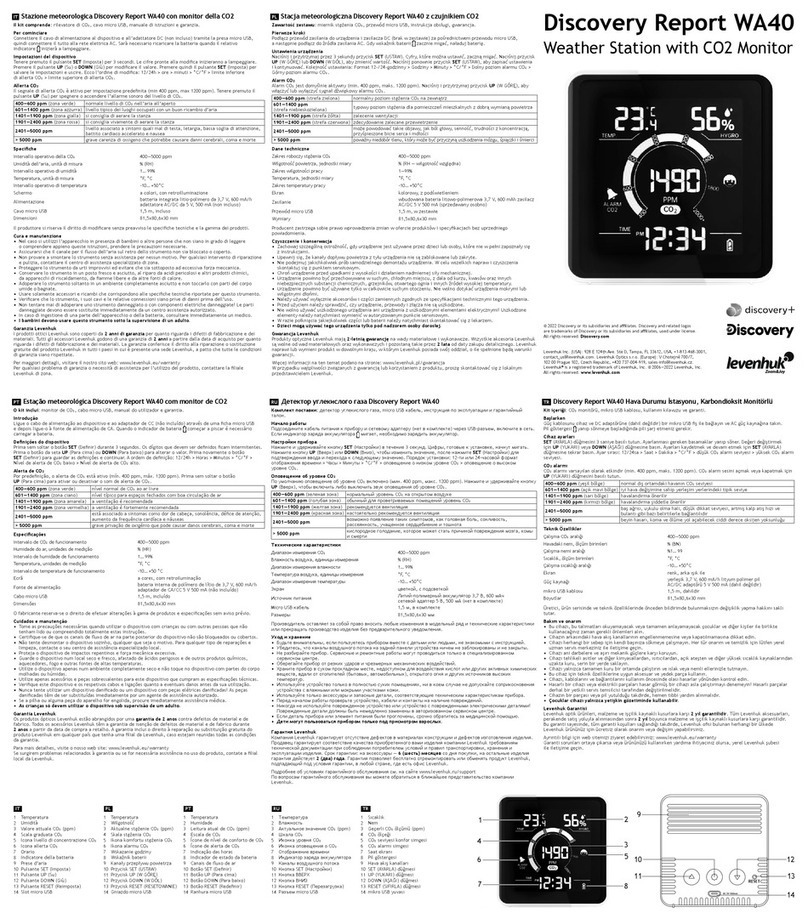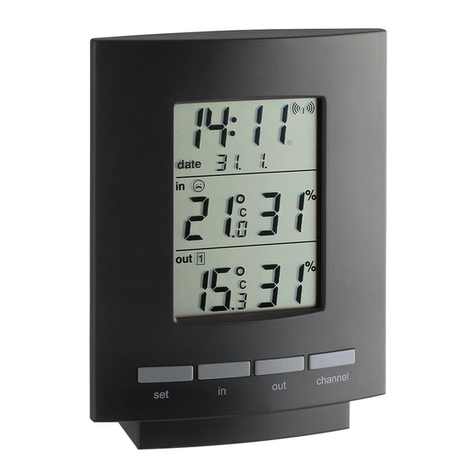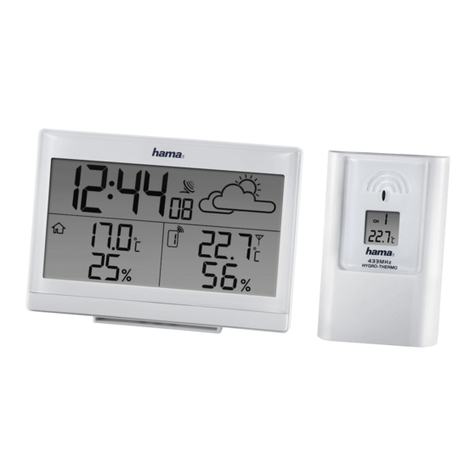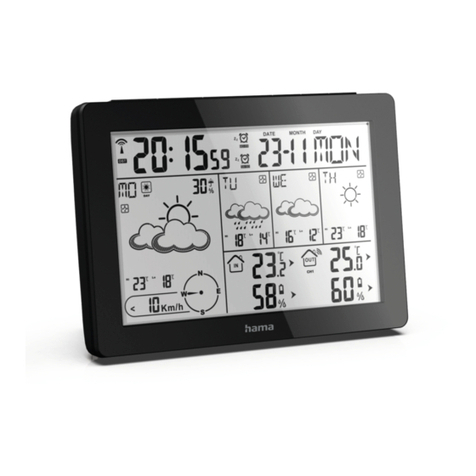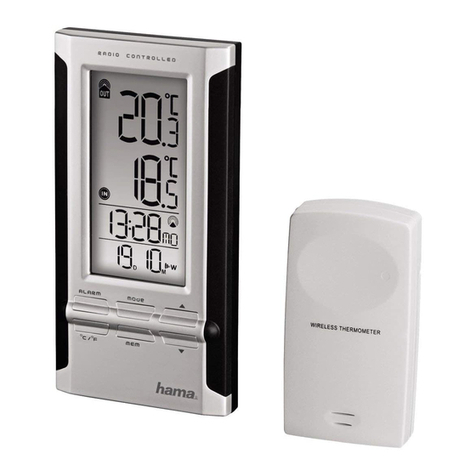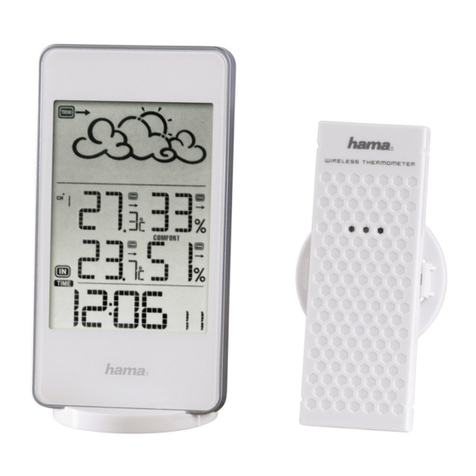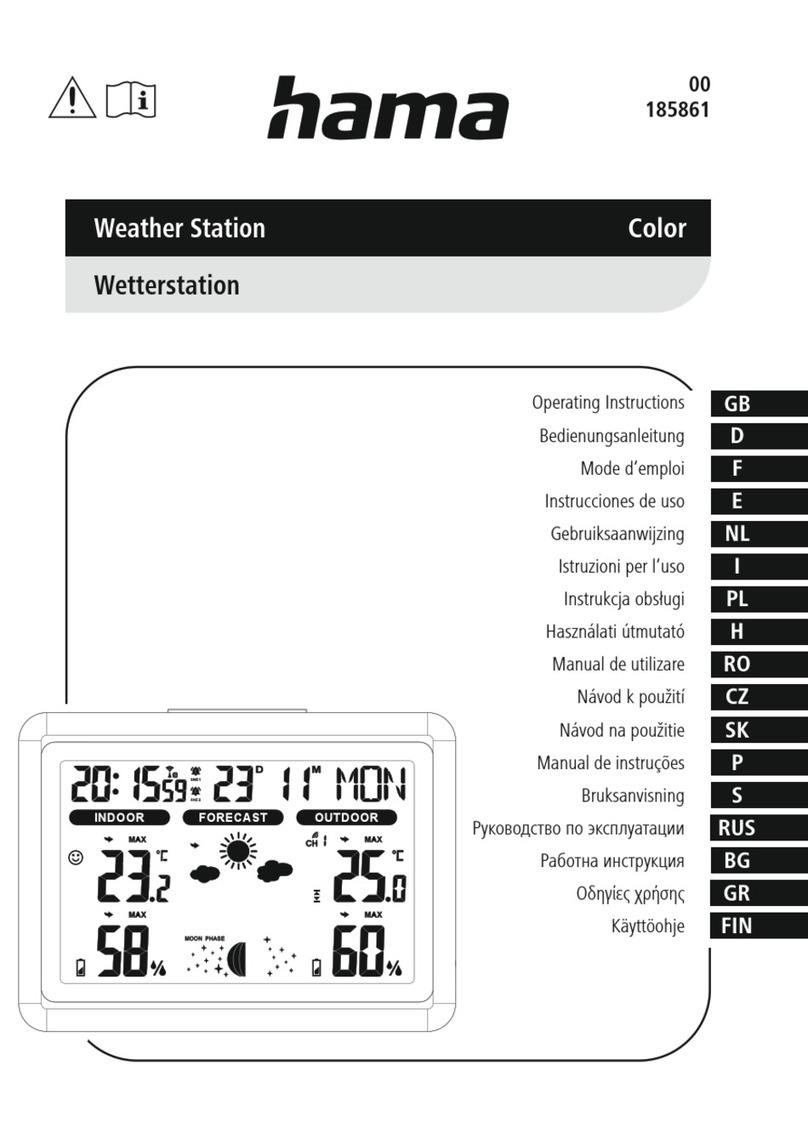9
Note – Weekday
You can choose from German (GE), English (EN), Danish (DA), Dutch (NE), Italian (IT),
Spanish (ES) and French (FR) for the weekday display.
Celsius/Fahrenheit
•Press the –button (18) to switch between °C and °F for the temperature display.
Alarm
•Repeatedly press the MODE button (15) to access alarm mode 1 or 2 .
A1 or A2 is displayed accordingly in the seconds display.
•Press and hold the MODE button (15) for approx. 3 seconds to set the signal time of the
alarm displayed. The hours display begins to ash.
•Press the +button (17) or the –button (18) to select the hour for the alarm time and
conrm your selection by pressing the MODE button (15). The minutes display begins to
ash.
•Repeat the process to set the minutes for the alarm time.
•Press the MODE button (15) repeatedly to also set the other alarm mode or return to the
time display (12).
•If you do not make an entry for 13 seconds, you automatically exit the setting mode.
•Press the ALARM button (16) to activate/deactivate Alarm 1, Alarm 2 or both. The alarm
symbol (4) will appear/not appear.
•If the alarm is triggered, the alarm symbol (4) will begin to ash and an alarm will sound.
•Press any button (except the SNOOZE/LIGHT button (14)) to stop the alarm. Otherwise, it
will stop automatically after 2 minutes.
•If you press the SNOOZE/LIGHT button (14) during the alarm, the alarm is interrupted for
5 minutes and then goes off again. The alarm symbol (4) will ash.
6.4. Backlight
Note – Backlight
•If you press the SNOOZE/LIGHT button (14), the display will light up for approx. 5
seconds.

